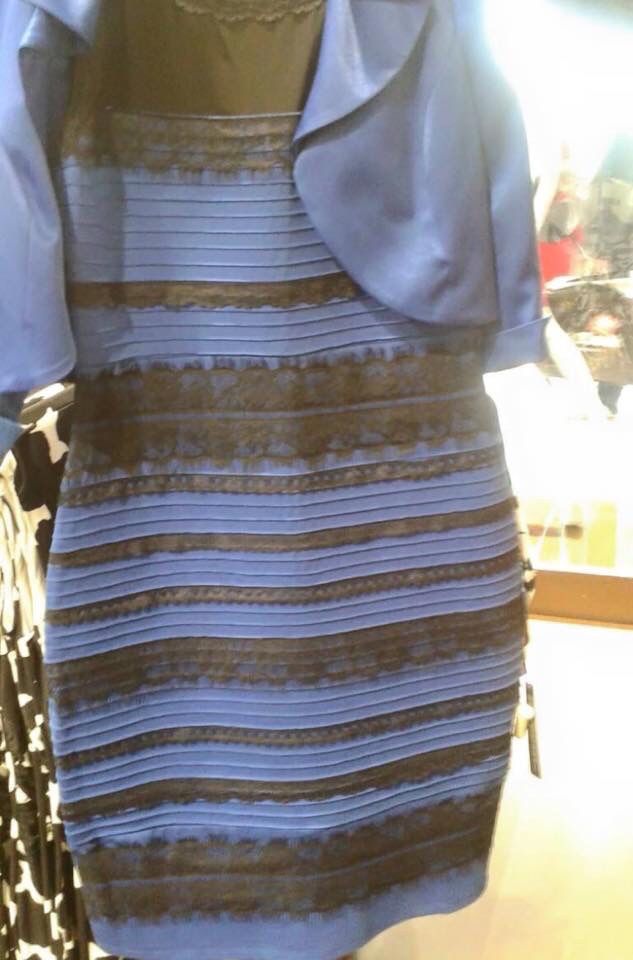Remember 'The Dress'? It Looked Different to Night Owls & Early Birds

"The dress" that went viral in 2015 caused a lot of confusion, with some people perceiving the garment as white and gold and others seeing it as black and blue. Now, researchers have found that these differences in perception may be rooted in the fast assumptions that people's brains made about how the dress was illuminated, according to a new study.
The people who saw the dress as white and gold probably assumed that it was photographed in a shadow, while those who saw the clothing as black and blue likely assumed it was illuminated by artificial light, found Pascal Wallisch, a neuroscientist at New York University. (The dress's actual color is black and blue.)
To appreciate the color of an object, people's brains constantly evaluate how this object is illuminated, Wallisch said in a statement. For example, an object can be illuminated by artificial light or by natural light, and people's perception of the illumination source affects the color that they perceive the object to be, he said. [Eye Tricks: Gallery of Visual Illusions]
The original image of the dress was overexposed; in other words, it was exposed to too much light when the photo was taken. Because of that, the garment's illumination source is unclear to people who are looking at the image, Wallisch said. "As a result, we make assumptions about how the dress was illuminated, which affects the colors we see," he said.
In the study, Wallisch created an online survey, gathering responses from 13,000 people. The survey included an image of the dress and questions that asked people whether they thought the dress had been photographed while in a shadow or illuminated by artificial light. Wallisch also included questions about when the participants normally went to bed and when they got up. In addition, he collected the people's demographic information, including their ages and genders.
Wallisch logged his data in two runs. The first run, which started in March 2015, yielded data from 8,084 people, and the other one, which started in March 2016, yielded data from 5,333 people. In the first run, 59 percent of participants saw the dress as only white and gold and 27 percent saw it as only black and blue.
In the second run, 56 percent of participants saw the dress as white and gold and 31 percent (1,650) saw it as black and blue. The remaining people in both groups saw the dress as switching between the two color combinations, or saw it in other color combinations, such as blue and gold or white and black.
Sign up for the Live Science daily newsletter now
Get the world’s most fascinating discoveries delivered straight to your inbox.
It turned out that the people who assumed that the dress was photographed in a shadow, as opposed to being illuminated by artificial light, were more likely to see it as white and gold than black and blue. Specifically, four out of five people who assumed the dress was photographed in a shadow thought the dress was white and gold, according to the study, published in April in the Journal of Vision. [The 7 Biggest Mysteries of the Human Body]
Wallisch also looked into potential mechanisms behind the results, discovering that people's daily levels of exposure to artificial light versus natural light might explain the findings. The night owls in the study — the people who said they usually went to bed late and got up late, and were therefore generally exposed to more artificial light — were more likely to assume that the dress was illuminated by artificial light than the morning larks, or those who got up early and went to bed early.
Hence, the night owls were more likely to see the dress as black and blue than white and gold, according to the study.
People who see the dress as white and gold one some days and black and blue on others may not be complete night owls or larks, Wallisch told Live Science. On days following higher levels of exposure to artificial light, these individuals may be more likely to see the dress as black and blue and vice versa.
Originally published on Live Science.













